Recycle Pharma effluent by SBR+RO Technology
COD reduction from >10,000mg/lit to <300mg/lit NH3 reduction from >500mg/lit to <50mg/lit, More than 80% recovery of effluent Reduce / Eliminate Expensive Evaporation Method to treat Effluent.
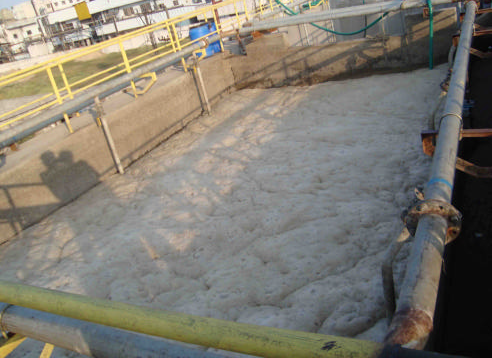
Biological Treatment (SBR)
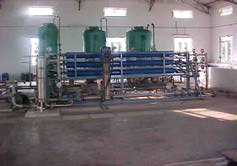
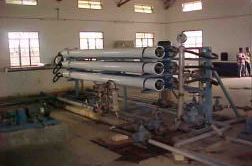
Reverse Osmosis
SBR is the only Biological treatment process which could remove COD &NH3 from Pharma or Pesticide effluents. Least Capital & Operating costs. Very Flexible for varying input conditions. RO using special spiral wound Non fouling RO membranes. Effluent Recovery. >80% recycled back to process. RO system Least Capital & Operating costs. Treatment Systems for High Ammonia Effluents.
Sequencing Batch Reactor (SBR)
The sequencing batch reactor (SBR) is a fill-and-draw activated sludge system for wastewater treatment. In this system, wastewater is added to a single "batch" reactor, treated to remove undesirable components, and then discharged. Equalization, aeration, and clarification can all be achieved using a single batch reactor using a timed control sequence The wastewater enters a partially filled reactor, containing biomass, which is acclimated to the wastewater constituents during preceding cycles. Once the reactor is full, it behaves like a conventional activated sludge system, but without a continuous influent or effluent flow. The aeration and mixing is discontinued after the biological reactions are complete, the biomass settles, and the treated supernatant is removed.
Advantages
- SBRs extremely flexible operation to adapt to different effluent characteristics.
- SBR is cheaper compared to conventional Activated sludge as secondary clarifiers and other equipments are eliminated.

Process Sequence of SBR System
Fill : The fill process typically allows the liquid level in the reactor to rise from 25 percent of capacity (at the end of idle) to 100 percent. The fill process normally lasts approximately 25 percent of the full cycle time.
React : To complete the reactions that were initiated during fill. Typically, reaction takes up 35 percent of the total cycle time.
Settle : To allow solids separation to occur, providing a clarified supernatant to be discharged as effluent.
Draw : The purpose of draw is to remove clarified treated water from the reactor. The time dedicated to draw can range from 5 to 30 percent of the total cycle time .
Idle : The purpose of idle in a multi tank system is to provide time for one reactor to complete its fill cycle before switching to another unit.
SCHEMATIC OF SBR + RO TO RECYCLEB
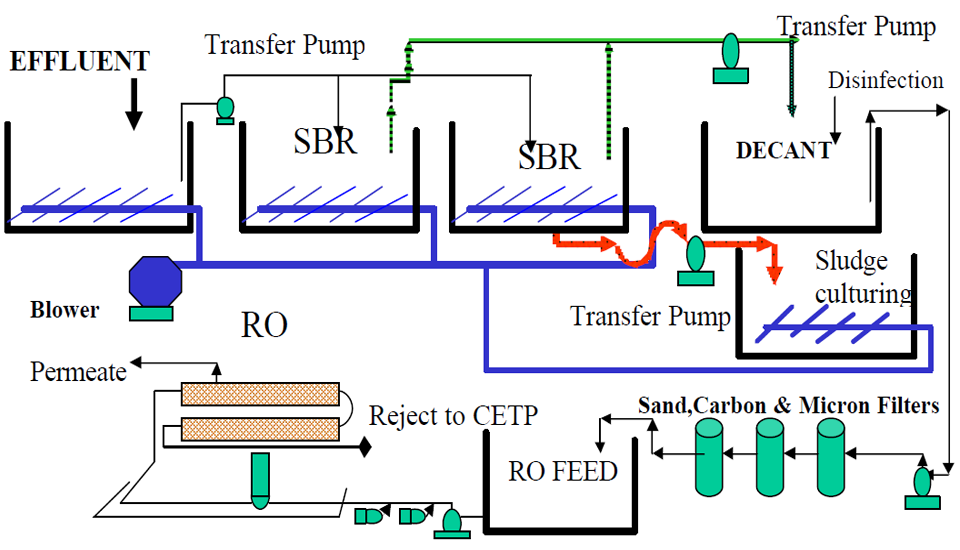
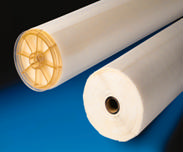
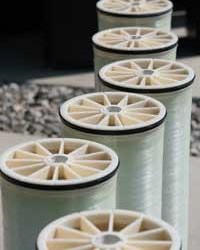
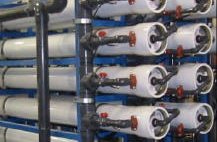
RO membranes for recycle of treated effluent.
RO membranes are designed to handle only raw water. Hence to get the maximum performance from the RO membranes , the effluent must be treated to the best possible as close to the raw water quality as possible. Hence the performance of ETP plays a very important role in reducing the fouling of membranes. As shown above the proper design of SBR will give the best treatment to the effluent and hence Feed to RO.
Bacterial growth cview
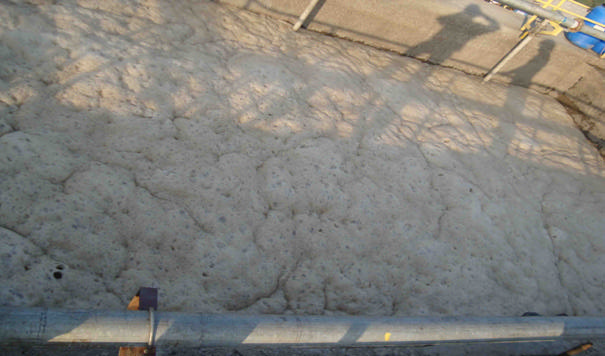
Bacterial growth Microscopic view
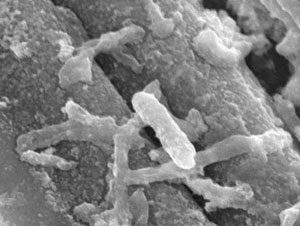
The synthetic pharmaceutical manufacturing plants produce a number of finished products and intermediaries in batch processes in various combinations and production campaigns. They also use a wide variety of chemical processes during the production of different molecules , like sulphonation, friedel crafts reaction, nitrification, extraction, purification and packaging. Because of the low yield in each step, the pharma effluents are known to contain high concentration of organic compounds (COD) and total solids, and solvent. Besides variety and high concentration, the effluent are also inconsistent, and vary widely depending on the product manufactured, materials used and the processing details .
For the reasons mentioned above, the Pharmaceutical effluents are very challenging to treat. The conventional activated sludge is not sophisticated enough to treat such a widely varying concentration of chemicals. Of the several chemicals used there is eminent possibility that some are strongly inhibiting also. The presence of pharmaceutical compounds in surface waters is an emerging environmental issue. Almost All the industries have effluent treatment plants. All of them have gone through several modifications adding one or more equipments till there is no more to add… and yet the desired results generally, have not been achieved. Industries starts wondering what is the path forward?
The silver bullet solution is SBR+RO. Sequential Batch Reactor + Reverse osmosis.
This system is low in capital and operating cost. The reliability of this system will far exceed that of conventional activated sludge and Disc membrane system,
